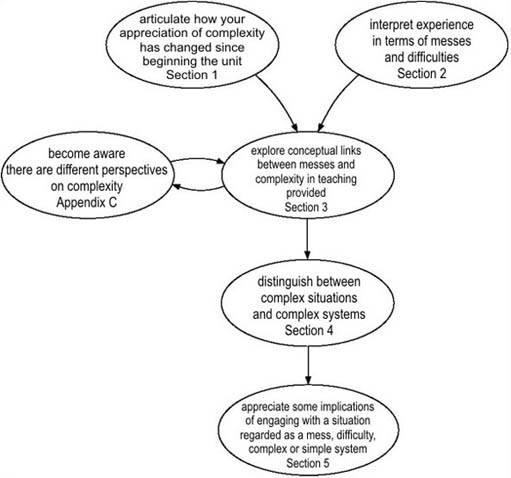14 Part 3: 4 Engaging with complexity
4.1 Articulating your appreciation of complexity
I have organised the material in this section so that you can follow the activity route shown in Figure 36.
This section is primarily concerned with what can be understood by the term complexity, and how to compare it with the ideas of difficulty and mess you may have encountered in your previous study of Systems.
To do this, you are first asked to notice your developing understanding of complexity in Section 4.2, and then to enter a deeper engagement with the distinction between difficulties and messes in Section 4.3. The substance of Section 4.4 is an exploration of the conceptual links between complexity and mess. It also alerts you to the many ways the term complexity is used, especially in relation to the new complexity sciences.

The terms ‘complexity’ and ‘system’ each carry a rich set of meanings. As with complexity, the everyday senses of ‘system’ can get in the way of acquiring a rigorous understanding of its meanings in systems thinking and practice. Section 4.5 tackles this thorny issue and explores whether, and in what ways, a complex situation can be thought of as a complex system. Finally, the implications of adopting these distinctions are explored in Section 4.6. Your understanding of complexity should have developed quite a bit by the end of this section.
You can return here, and to Figure 36, as you work through Part 3: Section 4. Doing so will help you maintain your sense of direction as you work through the ideas and arguments in this section.
